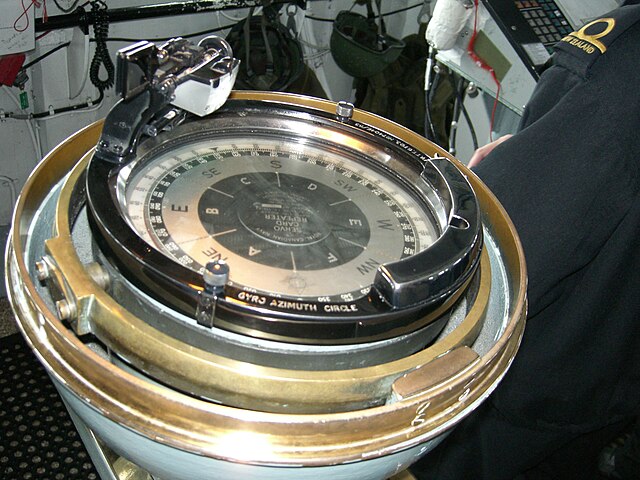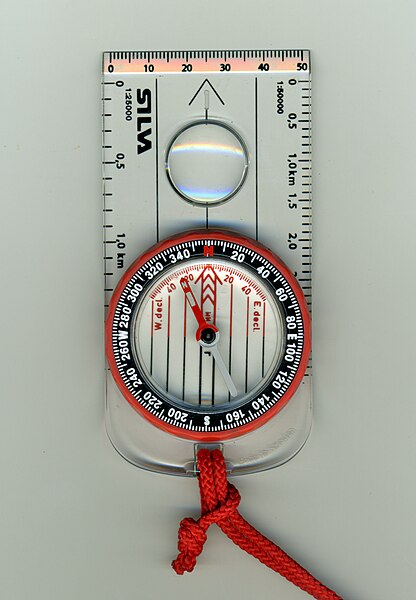A gyrocompass is a type of non-magnetic compass which is based on a fast-spinning disc and the rotation of the Earth to find geographical direction automatically. A gyrocompass makes use of one of the seven fundamental ways to determine the heading of a vehicle. A gyroscope is an essential component of a gyrocompass, but they are different devices; a gyrocompass is built to use the effect of gyroscopic precession, which is a distinctive aspect of the general gyroscopic effect. Gyrocompasses, such as the fibre optic gyrocompass are widely used to provide a heading for navigation on ships. This is because they have two significant advantages over magnetic compasses:they find true north as determined by the axis of the Earth's rotation, which is different from, and navigationally more useful than, magnetic north, and
they have a greater degree of accuracy because they are unaffected by ferromagnetic materials, such as in a ship's steel hull, which distort the magnetic field.

Cutaway of an Anschütz gyrocompass
A gyrocompass repeater
The 1889 Dumoulin-Krebs gyroscope
A compass is a device that shows the cardinal directions used for navigation and geographic orientation. It commonly consists of a magnetized needle or other element, such as a compass card or compass rose, which can pivot to align itself with magnetic north. Other methods may be used, including gyroscopes, magnetometers, and GPS receivers.
A modern military compass, with included sight device for aligning
Model of a lodestone compass from Han dynasty
A liquid-filled protractor or orienteering compass with lanyard
Cammenga air filled lensatic compass







